Read Reviews
The Best Soldering Stations
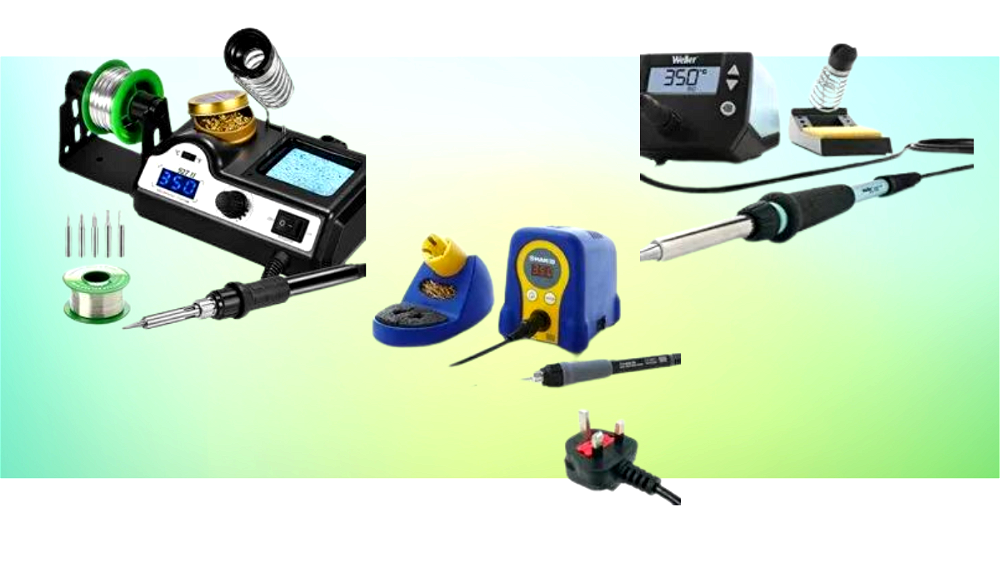
-
Best for build quality - Hakko FX-888D Soldering Station, 70W, AC, 26V
-
Best all round soldering station - Weller WE 1010 70W/230V WE Digital Soldering Station Kit
-
Best budget soldering station - Preciva 60W Professional Digital Soldering Station
-
Best with hot air gun - Preciva 8786D 2-in-1 Hot Air Gun Rework and Soldering Iron Station
-
Best no-frills soldering station - Tilswall Soldering Station 65W AC, 26V
-
Best budget soldering station with hot air gun - Katsu 2 in 1 852 D Electric Soldering Station
Soldering Station Reviews
1. Hakko FX-888D Soldering Station, 70W, AC, 26V [ SAVE 8% ]
Best for build quality
- Most users agree that the heat up time on this soldering iron is lightning fast. A fast heat up process means faster soldering, less downtime and more work done!
- This soldering station has an unbeatable temperature range. Starting at just 50° C, it can reach up to 480° C. That’s 30° more compared with the Weller WE 1010.
- The foam handle is supremely comfortable to use. It reduces hand fatigue during long soldering sessions, and I think makes it a more accurate iron to use.
- You can programme in five pre-set temperatures. This will allow you to work on a range of materials and carry out different jobs without fiddling with the settings.
- The soldering stand is heavy and solid, you’re not going to knock it over easily. It makes it easy to use and safe on most worktops.
- This is a lot of money to spend on a soldering iron. Unless you’re a professional or very keen DIYer, it’s going to be hard to justify the spend.
- The only tip that Hakko include in this soldering station is incredibly fine. It’s good for intricate work, but if you need something wider, you’ll need to buy it separately.
- Compared with the Weller WE 1010, this soldering iron doesn’t come with a standby mode. It’ll use more electricity over the course of a job because it doesn’t auto turn off.
- Don’t be mistaken that this is a Japanese made product, it’s only designed there.
- Digital Display
- Yes
- Power
- 70W
- Hot Air Gun
- No
- Max Temperature
- 50-480°C
- Temp Control
- Yes
- Temp Stability
- +/-1°C
- Wire Holder
- No
- Tips
- 1
- Build Quality
- 5
- Performance
- 5
- Ease of Use
- 5
- Value for Money
- 4
Japan’s HAKKO is a premium soldering iron brand and they make some of the best temperature-controlled soldering stations out there. The FX-888D provides premium build quality and features for serious professionals as well as keen DIYers.
The powerful unit is quick to heat up and will maintain temperatures during continuous use, thanks to Hakko’s 60 years of experience and technology. What makes this the best soldering kit is the soldering iron itself though. The handle is wrapped in a soft foam that makes it comfortable to handle, and accurate.
Did you find this review helpful?
2. Weller WE 1010 70W/230V WE Digital Soldering Station Kit [ SAVE 16% ]
Best all round soldering station
- The big LCD screen is a welcome addition to any soldering station. Knowing what temperature you’re working with at a glance is a neat feature.
- Changing tips is easy and tool-free. All you need to do is spin the plastic nut in front of the hand grip to release the tip. You can change it while it’s still hot as well.
- You can pre-set temperatures and save them in the device memory. It’s a professional-level feature found on only the best soldering irons.
- You can replace the soldering iron and station separately from each other. It’s the sign of a quality tool when replacing doesn’t mean buying a whole new kit.
- The LCD screen is big, but not backlit. It’s a basic feature that would make reading it even easier. If you work in a dim environment, it could be hard to see.
- Compared with the Hakko FX-888D, this soldering iron only heats up to 450° C. You can squeeze 30° more from some of the competition.
- The temperature stability is +/- 2°C. That’s not as good as some of the cheaper models on my list. Compared with the Tilswall soldering station’s +/- 1°C it’s a bit disappointing.
- This soldering station only comes with a single tip. Compared with the five tip kit that comes with the Preciva 8786D, it’s not the best set for beginners.
- Digital Display
- Yes
- Power
- 70W
- Hot Air Gun
- No
- Max Temperature
- 100-450°C
- Temp Control
- Yes
- Temp Stability
- +/-2°C
- Wire Holder
- No
- Tips
- 1
- Build Quality
- 5
- Performance
- 5
- Ease of Use
- 5
- Value for Money
- 4
The Weller WE 1010 is one of the best soldering stations on the UK market. Probably because it’s a quality soldering station that’s incredibly safe and easy to use. One of the best digital soldering station brands, Weller are the go-to people when you want a quality manual soldering solution.
The first thing you’ll notice about the WE 1010 station is the clean and simple design. The base unit has a large LCD screen and just three buttons to control all the features. I like the large and easy-to-read ON/OFF switch. It’s also simple to set the soldering temperature.
The included tip is the quality you’d expect from the best soldering iron station and can be easily changed without tools. If you’re looking for the best soldering station for the UK market, this is it.
Did you find this review helpful?
3. Preciva 60W Professional Digital Soldering Station [ SAVE 15% ]
Best budget soldering station
- This is a proper soldering kit for beginners and those who want to upgrade from a basic iron setup. The range of tips are good for different soldering jobs and are pretty good quality.
- I like that this soldering station comes with a solder sucker. Compared with the Weller WE 1010, you get some useful accessories without paying the high price tag.
- For a budget soldering station, I was impressed to see an auto-sleep mode. If you leave the iron for ten minutes, it’ll power down. Give it a shake and it comes back up to temperature!
- This soldering iron uses a ceramic core to heat up quickly. Compared with the Weller WE 1010, it’s a lot cheaper but with some of the same technology.
- Unlike the KATSU YCD-8582D, this unit doesn’t come with a hot air gun. It’s an extra tool I find to be incredibly useful when working on electronics.
- The soldering station is quite light compared with the Hakko FX-888D or Preciva 8786D. A good heavy base is ideal for keeping the hot tip out of trouble.
- If you need to keep your working temperature between +/- 1° C, you should go for the Tilswall soldering station in the same price bracket.
- It’s always good to have a solder roll holder, but this one feels a bit flimsy. It’s still useful for storing rolls when not in use though.
- Digital Display
- Yes
- Power
- 60W
- Hot Air Gun
- No
- Max Temperature
- 90-480°C
- Temp Control
- Yes
- Temp Stability
- +/-2°C
- Wire Holder
- Yes
- Tips
- 5
- Build Quality
- 4
- Performance
- 4
- Ease of Use
- 4
- Value for Money
- 5
This Preciva digital soldering station uses a ceramic core to heat up the soldering tip in just 15 seconds. It makes use of constant temperature control technology to maintain the displayed temperature to within +/- 2° C.
The rubber grip on the soldering iron is comfortable and the display is easy to read. Even though you control the temperature with a dial, the actual heat is displayed digitally. It’s not a premium soldering station but still one of the best digital soldering stations for the money.
What makes this the best soldering kit out there is the number of useful extras you get with this set. The five extra tips will come in handy, and so will the solder sucker pump. What makes this the best soldering station for beginners though is the included solder wire bracket and roll of soldering wire. It’s everything you need to get to work straight away.
Did you find this review helpful?
4. Preciva 8786D 2-in-1 Hot Air Gun Rework and Soldering Iron Station[ SAVE 15% ]
Best with hot air gun
- This soldering station comes with a clever safety function. If you leave it for ten minutes, it enters “sleep mode” and powers down. An ideal thing for forgetful users!
- I like the wire spool holder. If you’re prone to losing things like that, it’s great to have an onboard holder. It’s wide enough for large spools or even two next to each other.
- Having a hot air gun with four different nozzles to choose from is great. With a bit of practise, you can repair broken connections or shrink wrap to your heart’s content.
- This soldering iron gets up to temperature quickly. It’s usually a sign of a powerful transformer and quality components. There’s less time waiting around.
- Compared with the Tilswall soldering station, setting precise temperatures is easy. I like that both the soldering iron and hot air gun have separate digital gauges.
- Unfortunately, you can’t detach the heat gun from the soldering station. It’s a large part of the overall kit and it would be handy if you could move it out of the way when necessary.
- Some users have had issues with melting parts on the soldering iron. It could be a case of poor quality control on the part of Preciva.
- Other users have complained that the tips on the soldering iron don’t heat evenly. It might be the case that the included ones aren’t top quality.
- Digital Display
- Yes
- Power
- 740W (Hot Air Gun)
- Hot Air Gun
- Yes
- Max Temperature
- 200-480°C
- Temp Control
- Yes
- Temp Stability
- Not stated
- Wire Holder
- Yes
- Tips
- 5
- Build Quality
- 4
- Performance
- 4
- Ease of Use
- 4
- Value for Money
- 4
Specialising in useful gadgets like woodburning stations and crimping tools, Preciva have made a brilliant soldering iron and hot air gun, and all in one small package. The desktop station comes with everything you need for soldering and reworking electronics.
Featuring two separate digital displays for both soldering iron and heat gun, it’s easy to set temperatures. And thanks to inbuilt PID temperature control technology, once it comes up to temperature it should stay there.
I like that this kit comes with everything you’d need to get started for tinkering with electronics. You get five soldering iron tips, four different hot air nozzles for different heat jobs and even a length of lead-free soldering wire. It’s an ideal kit for beginners or even experienced users.
Did you find this review helpful?
5. Tilswall Soldering Station 65W AC, 26V
Best no-frills soldering station
- For the money, it’s quite hard to beat this kit for tips and maximum temperature. Compared with the much more expensive Hakko FX-888D, this is a kit for starting work immediately.
- Tilswall have chosen to use an advanced Teflon and silica soldering iron cable. It can withstand high temperatures and should stay flexible all year round.
- The integrated copper wire tip cleaner is excellent. A lot of users don’t like the wet sponge method for cleaning tips, and they haven’t wasted the space with one here.
- If you want to plug in a longer or shorter power supply, you can. It’s not an integrated cord like most soldering stations. It makes it more user friendly for different situations.
- It’s a shame that Tilswall haven’t used an LCD screen to show the temperature clearly. It’s much harder to quickly check the current temperature in comparison with the Hakko or Weller station.
- This soldering station is no good for low temperature work. The lowest setting is a whopping 200°C!
- Several users have complained about a buzzing noise that the transformer makes when it gets to temperature. It could be down to poor parts or quality control.
- It’s always good to get tips included with a soldering kit, but these ones don’t look like they’ll last for long. It’s probably better to invest in quality soldering tips quickly.
- Digital Display
- No
- Power
- 65W
- Hot Air Gun
- No
- Max Temperature
- 200-480°C
- Temp Control
- Yes
- Temp Stability
- +/-1°C
- Wire Holder
- No
- Tips
- 5
- Build Quality
- 4
- Performance
- 5
- Ease of Use
- 5
- Value for Money
- 4
With a massive range of power tools, accessories, and other useful gadgets, Tilswall have made a useful soldering station kit that won’t break the bank. It comes with a decent range of tips for all sorts of soldering jobs.
Setting the temperature is easy with the large dial on the front of the station. It shows the temperature in ° Fahrenheit as well as ° Celsius. It’s handy to have that information in front of you when working. Tilswall use a ceramic heating core that should help keep a stable temperature for longer.
With an adequate temperature range of 200 – 480° C, it’s not got the super-low range, but has an impressive top temperature for a soldering iron in this price range. They’ve even included a decent range of tips and some tin wire to help get you started. It’s an excellent budget starter kit.
Did you find this review helpful?
6. Katsu 2 in 1 852 D Electric Soldering Station
Best budget soldering station with hot air gun
- I’m a huge fan of 2-in-1 soldering stations. With a bit of practise, you can perform a lot of tasks with a quality heat gun. They’re not just for shrink wrapping tubing.
- It’s great that you can remove both the soldering iron and the heat gun. Compared with the Preciva 8786D I, when you’re not using an accessory, you can stow it away.
- The blinking light that tells you when the soldering iron tip is up to temperature is a useful feature. It’s little time saving features like this that make the best soldering stations.
- Compared with the more expensive Weller WE 1010, the LCD screen on this soldering station is backlit. It will help quick temperature readings, whatever the lighting.
- Some users have complained about the temperature display being inaccurate. It’s worth testing the temperature with a tip tester before long soldering jobs.
- Other users have also complained about the maximum heat settings for the soldering iron. It’s not clear what the maximum rated temperature is either.
- The heat gun lacks the power you get compared with the Preciva heat gun. It’s not quite as hot for melting lead solder parts.
- Digital Display
- Yes
- Power
- 750W (Hot Air Gun)
- Hot Air Gun
- Yes
- Max Temperature
- Not stated
- Temp Control
- Yes
- Temp Stability
- Not stated
- Wire Holder
- No
- Tips
- 1
- Build Quality
- 4
- Performance
- 4
- Ease of Use
- 4
- Value for Money
- 4
KATSU is one of those tool brands that make one of the best soldering kits that doesn’t cost a lot. It still includes some of the features you’d expect to find on the best soldering stations. The unit I looked at promises to heat up within a couple of minutes and maintain that temperature, even during constant use.
Because it’s a 2-in-1 tool, the 852 D soldering station also features a super-useful hot air gun. Used mainly to shrink wrap tubing, it’s a welcome addition to the best digital soldering stations, saving you upfront spend and valuable bench space. The dial is easy to use to set temperatures and the large, backlit LCD screens can be read, whatever the lighting. It’s one of the best soldering stations for the UK market if you want a solid and budget-friendly solution.
Did you find this review helpful?
Compare Product Features
Use the dropdown to sort the table by the feature you want to see.
Hakko FX-888D Soldering Station, 70W, AC, 26V
- 4.8
- Yes
- 70W
- No
- 50-480°C
- Yes
- +/-1°C
- No
- 1
Weller WE 1010 70W/230V WE Digital Soldering Station Kit
- 4.8
- Yes
- 70W
- No
- 100-450°C
- Yes
- +/-2°C
- No
- 1
Preciva 60W Professional Digital Soldering Station
- 4.3
- Yes
- 60W
- No
- 90-480°C
- Yes
- +/-2°C
- Yes
- 5
Preciva 8786D 2-in-1 Hot Air Gun Rework and Soldering Iron Station
- 4
- Yes
- 740W (Hot Air Gun)
- Yes
- 200-480°C
- Yes
- Not stated
- Yes
- 5
Tilswall Soldering Station 65W AC, 26V
- 4.5
- No
- 65W
- No
- 200-480°C
- Yes
- +/-1°C
- No
- 5
Katsu 2 in 1 852 D Electric Soldering Station
- 4
- Yes
- 750W (Hot Air Gun)
- Yes
- Not stated
- Yes
- Not stated
- No
- 1
How to Choose The Best Soldering Station
Soldering is the process of joining or taking apart things that are held together with solder. Solder is a metal alloy used mainly in electronics. It can also be found in crafts as diverse as stained glass window and jewellery making. If you want to work well with solder, then you need the best soldering station.
Solder
The key element in soldering is the metal alloy that is liquified by the soldering iron. This liquid metal creates connections between components to allow electricity to flow. Like welding, solder is also used by plumbers to seal copper pipe connections. There are plenty of different types available, but here are the most common:
Lead-based solder is the oldest type still used. It’s mixed with tin in different amounts to produce different types of bonds. It has a low melting point and is easy to work with. Lead, however, can be dangerous to work with.
Lead-free solder is more common nowadays, due to the dangers of working with lead. It’s less harmful to users as well as the environment and still produces excellent results. The only downside is the relatively high melting point.
Different Soldering Tips
Depending on the size of the pool of solder you’re working with, you’ll need different tips. They’re often attached to the end of the soldering iron with a plastic nut that squeezes them into place.
They’re labelled with letters that roughly correspond to their shape or use:
B-series or conical tips are common. They’re good all-rounders that can work on a range of soldering jobs at any angle.
I-series or needle tips are ultra-fine for working on tiny components or anything that requires a high level of detail. They’re obviously not the right choice for working on large areas.
D-series chisel tips are another one of my favourite all-rounders. Offering more surface area than conical tips, they’re ideal for beginners and quick DIY electrics jobs. The flat tip is easy to control.
There are plenty of other specialist tips out there, but unless you’re really getting into soldering, the ones above are enough for DIYers.
Temperature Control
One of my favourite things about modern soldering stations is temperature control. The soldering irons of old were crude, you’d plug them in, and they heated up to a certain temperature. Not any more though! With some soldering irons ranging from 50 – 480° C, you can use different types of solder and work on delicate circuit boards without damaging them.
Hot Air Guns
Some of the more versatile soldering stations come with hot air guns attached. They’re a brilliant bit of kit to have on hand if you’re working with electronics or other crafting jobs. They use an internal fan and a heating element to fire a blast of air with pinpoint accuracy.
Commonly used for reworking circuit boards, they get hot enough to melt solder for making repairs or removing rough bits of solder. You can fit different types of heads onto the hot air gun wand for different uses as well, like heat-shrinking cable wrappers.
Soldering Station FAQs
The word “solder” has its roots in Latin. It means “fasten together”. This fastening together is achieved by melting filler metal and using it to bridge gaps between two components.
There’s no one correct temperature for soldering. Depending on the type of component you’re working on or the type of solder you use, different temperatures work best. Check the labels on your roll of solder for the melting point and set the soldering iron to just above that.
There are obvious dangers to working with molten metal and high-temperature soldering irons. Always use a soldering iron cradle and keep any flammable materials well away from the working area.
The less obvious, but more hazardous, parts of soldering come from inhalation and ingestion of dangerous fumes. Always make sure you solder in a well-ventilated area and invest in a carbon-filtered extraction fan if you’re not able to open a window.
Lead-based solder is more potentially harmful than lead-free, so try to use it as often as possible.
The first thing to choose is a quality solder with a mixture of 60% tin and 40% lead. The higher the tin content, the more strength your joints will have, but they’ll also be less flexible.
If you’re using lead-free solder, one of the best ones around for strong joints is SN100C. It has a high melting point but creates extremely durable joins.
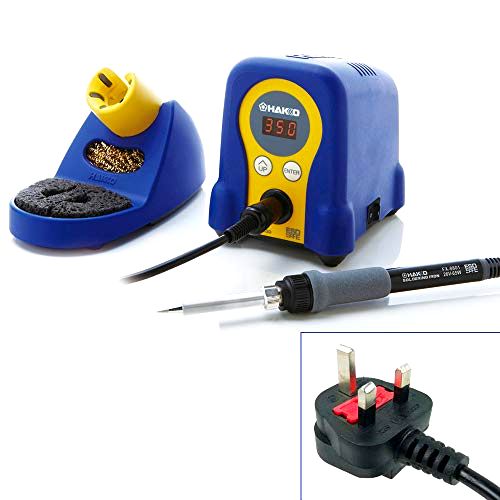
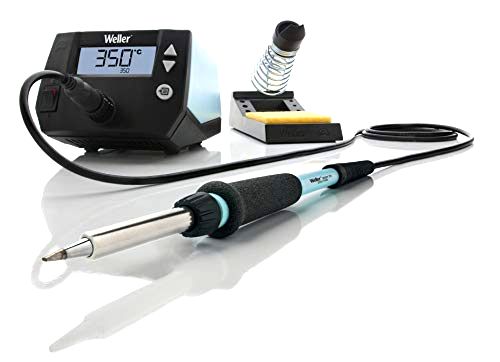
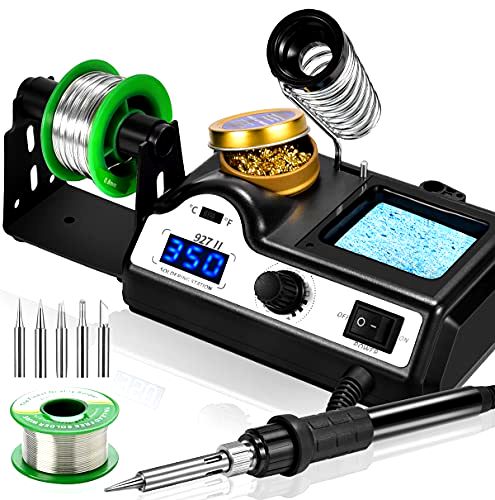
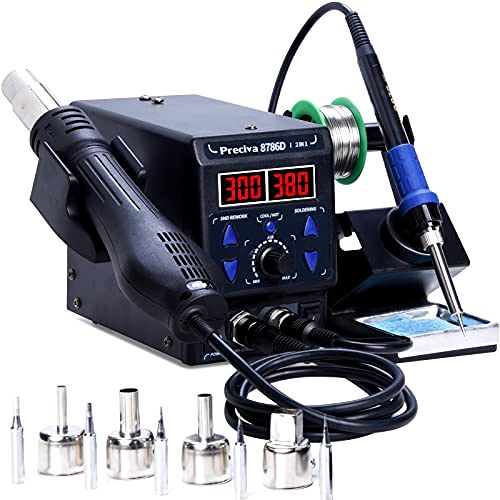
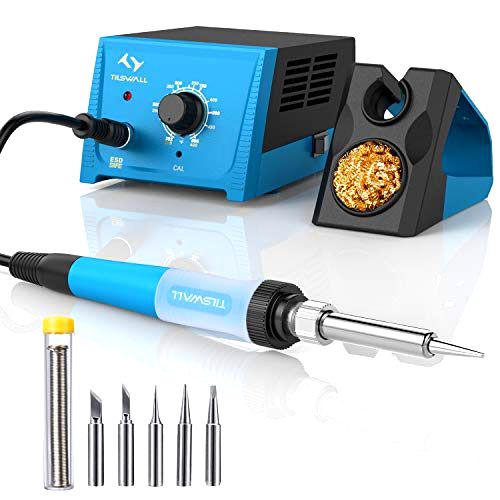
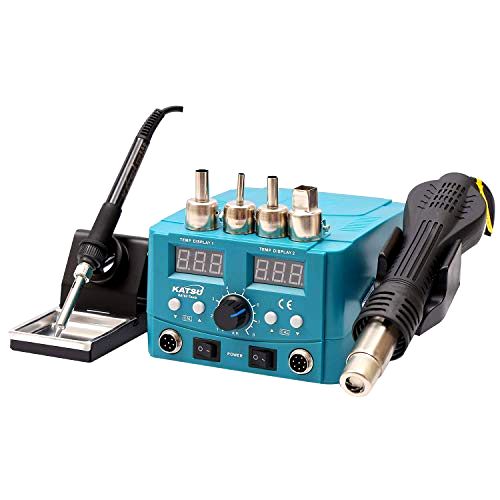

Share